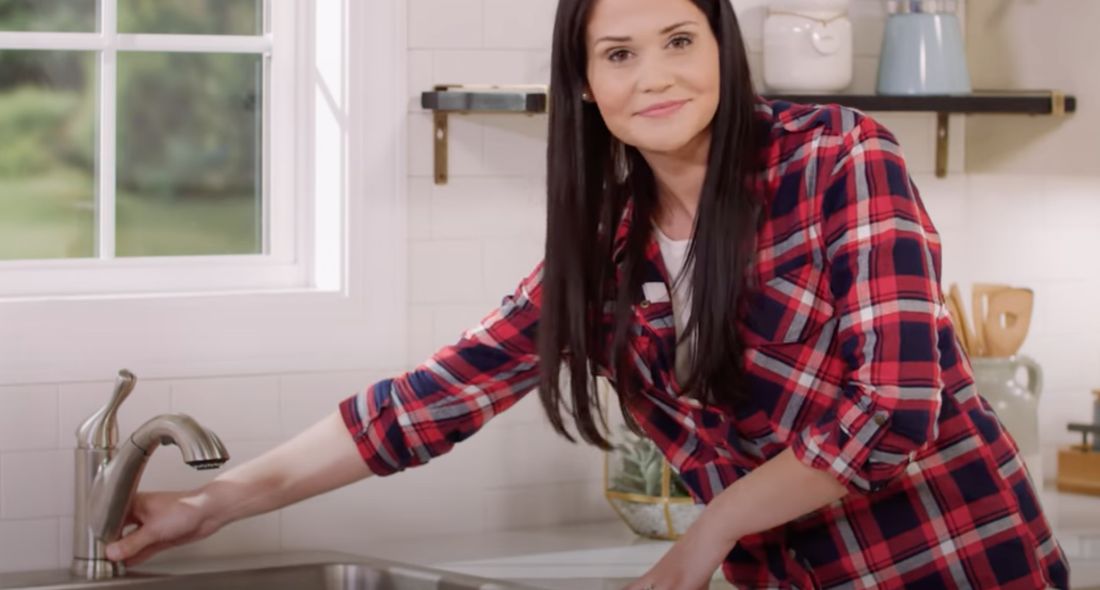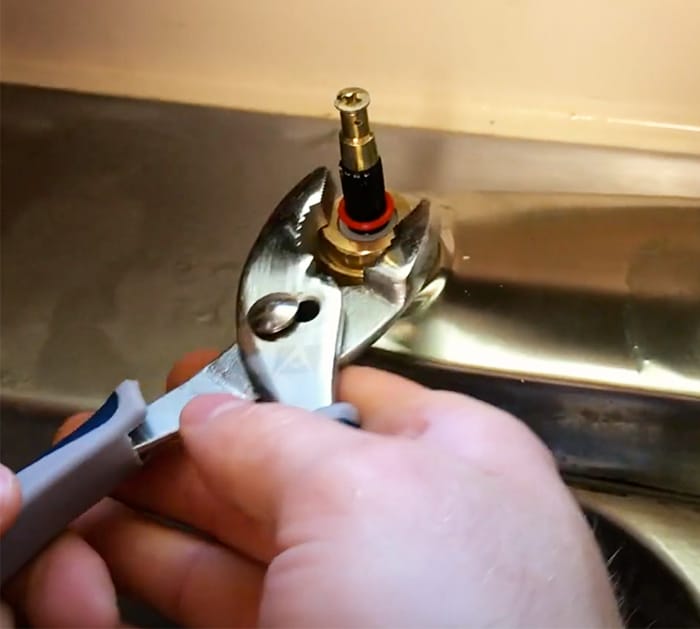What It's Essential to Deal with a Broken Faucet
What It's Essential to Deal with a Broken Faucet
Blog Article
How do you feel on the subject of Why Is It Important To Fix Your Leaking Tap/Faucet??

Trickling taps might appear like a minor trouble, yet their influence surpasses just the nuisance of the noise. From drainage to sustaining unnecessary monetary costs and health risks, neglecting a dripping faucet can result in numerous repercussions. In this article, we'll look into why it's crucial to address this usual home problem quickly and properly.
Waste of Water
Environmental Impact
Dripping taps add dramatically to water waste. According to the Epa (EPA), a single faucet leaking at one drip per second can lose greater than 3,000 gallons of water per year. This not just pressures water resources however likewise impacts environments and wild animals based on them.
Financial Prices
Enhanced Water Bills
Past the ecological impact, leaking taps can inflate water expenses substantially. The accumulated waste in time translates right into greater energy expenditures, which might have been avoided with prompt repair services.
Potential Residential Property Damage
Moreover, prolonged dripping can lead to damage to fixtures and surface areas bordering the faucet. Water buildup can trigger discoloration, corrosion, and even architectural concerns if left ignored, leading to added repair service costs.
Health Issues
Mold And Mildew and Mildew Growth
The consistent presence of dampness from a dripping tap creates an excellent environment for mold and mold development. These fungis not only compromise indoor air top quality but also position wellness threats, particularly for individuals with respiratory conditions or allergies.
Waterborne Diseases
Stationary water in trickling taps can become a breeding ground for germs and various other virus, boosting the threat of waterborne conditions. Impurities such as Legionella bacteria prosper in stagnant water, possibly bring about major health problems when consumed or inhaled.
Do it yourself vs. Expert Repair service
Pros and Cons of Do It Yourself Repair Work
While some may attempt to take care of a dripping faucet themselves, do it yourself fixings feature their own collection of challenges. Without proper expertise and tools, DIY efforts can worsen the concern or cause insufficient repair work, prolonging the trouble.
Advantages of Hiring a Professional Plumber
Working with a specialist plumber ensures that the underlying root cause of the trickling faucet is resolved effectively. Plumbers possess the know-how and equipment to identify and repair faucet issues successfully, saving time and lessening the risk of additional damage.
Step-by-Step Overview to Taking Care Of a Dripping Faucet
Tools Called for
Prior to attempting to repair a trickling faucet, collect the necessary devices, including a flexible wrench, screwdrivers, substitute parts (such as washers or cartridges), and plumber's tape.
Usual Tap Issues and Their Solutions
Recognize the kind of faucet and the certain problem causing the drip. Common problems include damaged washing machines, corroded valve seats, or defective O-rings. Refer to manufacturer directions or on the internet tutorials for step-by-step guidance on repairs.
Preventive Measures
Regular Maintenance Tips
To stop dripping taps, do routine maintenance such as cleansing aerators, evaluating for leaks, and replacing damaged parts quickly. In addition, consider setting up water-saving tools or updating to more efficient fixtures.
Importance of Prompt Fixes
Resolving trickling taps as soon as they're discovered avoids further water wastefulness and possible damage, ultimately conserving both water and cash in the long run.
Impact on Property Worth
Understanding of Well-Maintained Residential Or Commercial Property
Keeping a building in good condition, including addressing maintenance concerns like leaking taps, enhances its viewed worth and worth among prospective customers or renters.
Impact on Resale Worth
Residences with properly maintained plumbing fixtures, including taps, command greater resale worths in the realty market. Resolving trickling taps can contribute to a positive perception during residential property examinations and arrangements.
Ecological Duty
Specific Payment to Conservation
Taking responsibility for fixing trickling taps straightens with wider efforts toward water preservation and ecological sustainability. Every individual's actions collectively make a significant influence on preserving priceless sources.
Lasting Living Practices
By prioritizing prompt fixings and taking on water-saving practices, individuals add to sustainable living techniques that benefit both existing and future generations.
Final thought
Attending to a dripping tap exceeds mere ease; it's an important step toward saving water, decreasing financial expenses, and guarding health and wellness and home. Whether with do it yourself repairs or specialist help, doing something about it to repair trickling faucets is a small yet impactful means to advertise responsible stewardship of sources and contribute to a much healthier, more lasting future.
How to Fix a Leaky Faucet: Step-by-Step Repair Guide
A leaky faucet may seem like a simple annoyance, but if it's not fixed promptly, that leak could cost hundreds to potentially thousands. From water damage to mold, mildew, and high water bills, even a tiny leak can be catastrophic if left unattended. Damage like this can even affect the overall value of your home, so it's important to take the right approach for leaky faucet repair. You may need the help of a plumber in some cases, but we've got a few tips you can try on how to fix a leaky faucet before calling the pros.
Four Faucet Types
When you're learning how to fix a leaky faucet, the first step is knowing what kind of faucet you're working with! There are four common types.
Cartridge Faucets
Cartridge faucets come in one- or two-handled varieties. In one-handled cartridge faucets, hot and cold water combines in a single cartridge. In the two-handled versions, hot and cold water are controlled separately and mixed in the faucet.
Ball Faucets
Ball faucets have a single lever you push up and down to adjust the pressure and rotate to change the temperature. A slotted metal ball controls the amount of water allowed into the spout.
Compression Washer Faucets
They're the oldest type of faucet, but they're still used in many homes — especially older ones. Compression faucets have two separate handles that, when turned, raise or lower the washer that seals a water valve. This valve stops water from flowing through the faucet when it is turned off.
Disc Faucets
Disc faucets rarely need to be repaired due to their maintenance-free design. The water flow is controlled by two discs — the upper one raises and lowers against a fixed lower disc, creating a watertight seal. If your disc faucet starts leaking, you may need to replace the seals or clean residue buildup from the inlets.
Fixing a Leaky Faucet
Step 1: Turn Off the Water
Whether you're learning how to fix a leaky bathtub faucet or how to fix a leaky kitchen faucet, always turn off the water supply to your working area when you're fixing a leak. The last thing you want is a flood added to your list of things to fix.
Look for the shutoff valves below your sink or around the tub and turn them clockwise to stop the water flow. If your faucet doesn't have shutoff valves, you may need to turn off the water for the whole house. Check to make sure it's off by turning the faucet on. If nothing comes out, you're ready to start the repair.
Step 2: Take Apart the Faucet
How you disassemble your faucet depends on the type of fixture you have. You can use a flathead screwdriver to remove the caps on top of the handle or handles for cartridge and compression faucets. Inside, you should see handle screws. Unscrew these with a screwdriver to remove the handle.
Disc- and ball-style faucets will typically have an inlet screw near the handle, and removing that will reveal the interior of the faucet.
Detach the Valve Stem
For cartridge- and compression-style faucets, you'll see the inner valve stem or cartridge once you remove the faucet handles. If you have a compression faucet, unscrew the brass valve stem. If you have a cartridge faucet, pull out the cartridge. If your cartridge has been in place for a while, it may require some tools or extra force to remove it due to mineral deposits.
Examine and Replace Parts
Once you've removed the parts, check them out to confirm what needs to be replaced. You may see corroded rubber washers, O-rings, stems, or cartridges. On a ball-style faucet, check the seats and springs for damage.
If you need to repair a leaky disc faucet, check the inlet and seals on the lower disc.
Once you determine what parts must be replaced, visit your local hardware store. Bring the damaged parts with you to ensure you can purchase the correct components to replace them.
Clean Valves and Faucet Cavity
If you've removed a stem or cartridge, you may notice mineral buildup in the faucet's threads. Use white vinegar to clean the valve seat by soaking it for a few minutes, then scrub it away with a soft toothbrush and rinse with warm water. You can also clean the interior of the faucet in the same way.
Reassemble the Faucet
Once your faucet is cleaned and the required parts have been replaced, it's time to reassemble it. Put the pieces back together and slowly turn the water supply back on. Doing this slowly is crucial because too much initial water pressure can damage the new hardware you've just installed.
https://homewarranty.firstam.com/blog/how-to-fix-leaky-faucet

I came across that content about What Causes Leaky Faucets & How To Fix Them when doing a lookup on the search engines. Sharing is caring. Helping people is fun. Thanks for being here. Don't forget to stop by our website back soon.
Report this page